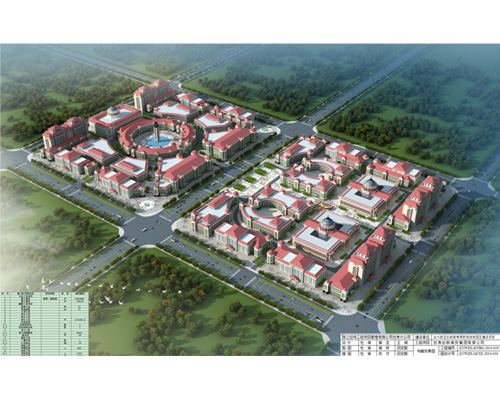What are the energy-saving design analysis of equipment and auxiliary facilities in the energy-saving assessment report? Lanzhou Zhiyuan Engineering Project Management Service Co., Ltd. tells you
General drawing and transportation
Briefly describe the current characteristics of the construction site and the surrounding environment. According to the general layout, describe the energy saving measures for the general layout and transportation, and analyze the overall layout plan of the project and the energy saving design in the traffic organization. The company that wrote the Lanzhou Energy Conservation Assessment Report told you to organize the traffic reasonably according to the characteristics of functional zoning, the type and quantity of transport materials, including passenger flow routes, logistics transport routes, transport modes, transport distances, etc.
Energy types and energy consumption estimation of transportation consumption, and analyze the transportation energy efficiency level of the project.
If it is a reconstruction and expansion project, the original project situation and the relationship with the project shall be briefly described.
technology
Briefly describe the main process technology, main design parameters, scale and annual output. Analyze the energy-saving design of process technology, including the overall layout of process production, process flow and principle, selection of technical scheme, and analyze the energy-saving measures taken by the process.
The principle of professional cooperation. For example, the load rate of equipment is lower than the specified value; Single piece small batch production, castings, forgings, heat treated parts, surface treated parts; A small number of weldments shall be outsourced;
Selection of new processes, new materials, new technologies and energy-saving equipment; The proposed comprehensive energy-saving measures for water, electricity and materials saving: such as the utilization of waste water, waste gas, waste heat, comprehensive utilization of resources, utilization of renewable energy, etc. and the prediction of energy-saving effect.

Brief description of energy-saving design requirements
The energy processing, conversion, storage and utilization in the process shall be described briefly or indicated by the energy balance table or the energy flow diagram, the main energy consuming equipment of the process shall be identified, and the analysis of the process energy efficiency level shall be analyzed (compared with the advanced level at home and abroad, the same industry level and the local energy consumption access standards).
In case of reconstruction and expansion project, the original process and its relationship with the project shall be briefly described. Describe the main production energy consumption process, parameters and quantity of main energy consumption equipment, annual energy consumption and existing problems.
Architecture
Lanzhou Energy Conservation Assessment Report Preparation Company tells you to briefly describe the scale of the construction project (total land area, total building area, total investment, capacity, total number of households, etc.) and design standards (project grade, design service life, project fire resistance rating, decoration standards, etc.).
The building energy conservation design of the analysis project includes:
The building layout includes orientation, sunshine environment, natural ventilation, natural lighting, etc.
Principles and practices of thermal insulation, heat insulation and sunshade of building structure and building envelope (external wall, external window, roof, etc.).
Principles and measures for integrated design of renewable energy utilization and buildings.
The use of glass curtain wall and its energy-saving measures.
Briefly describe the energy-saving design requirements for public works and other disciplines.
In case of reconstruction and expansion project and technical reconstruction project, the original building situation and its relationship with the project shall be briefly described.
Water supply and drainage
Local water supply, rainwater and sewage discharge conditions and available renewable energy conditions.
Briefly describe the design parameters of water supply and drainage, annual total water consumption and heat consumption; Configuration of main energy consuming equipment, including equipment and pumps of domestic or process water supply and hot water systems.
In case of reconstruction and expansion projects and technical reconstruction projects, the water supply and drainage works of the original project and its relationship with the project shall be briefly described. By briefly describing the domestic or process water supply, hot water system, rainwater and sewage drainage system and the selected main systems and equipment configuration such as water supply pressurization, hot water heating, water treatment, etc., the regulation mode of water supply and hot water system Estimation of heat consumption of domestic hot water (water consumption per capita, per unit area or per unit product, domestic hot water -- including drinking hot water, swimming pool, etc., and process hot water consumption), estimation of energy consumption of water supply and drainage system (energy consumption of energy consuming equipment can be estimated according to the law of load rate change predicted according to the nature of the project, and the key points of energy conservation design and energy efficiency level of water supply and drainage of the project can be analyzed.
HVAC
Briefly describe the interior design parameters of the project; Scope of heating, air conditioning and ventilation; Heating design heat load, air conditioning design cooling and heating load estimation; Estimate the annual total heating, cooling and energy consumption of heating, cooling and air conditioning, and analyze the HVAC energy efficiency level of the project.
When various types of electric heating are proposed, explain the reasons and conditions.
Lanzhou Project Appraisal Consultation The company tells you to analyze the HVAC energy-saving design of the project through the selection of heating source and air conditioning cold and heat source, heating, ventilation and air conditioning system type and main heating and cooling equipment, system regulation and control mode, and energy-saving measures taken by the HVAC discipline of the project (including renewable energy utilization, natural cold source utilization, etc.).
In case of reconstruction, expansion and technical transformation, describe the HVAC project of the original project and its relationship with the project.









